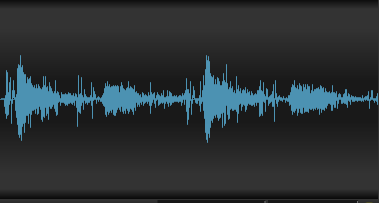Stridor is caused by upper airway narrowing or obstruction. It is often heard without a stethoscope. It occurs in 10-20% of extubated patients.
Stridor is a loud, high-pitched crowing breath sound heard during inspiration but may also occur throughout the respiratory cycle most notably as a patient worsens.
In children, stridor may become louder in the supine position.
Causes of stridor are pertussis, croup, epiglottis, aspirations.
Stridor Sounds


Half Speed Stridor Sounds


Technique

The patient's position should be sitting.
Auscultation Tips for Stridor
Features:A loud, high-pitched wheezing sound heard during inspiration but may also occur throughout the respiratory cycle. Often heard without a stethoscopeSound Wave
Authors and Sources
Authors and Reviewers
- ECG heart rhythm modules: Thomas O'Brien.
- ECG monitor simulation developer: Steve Collmann
-
12 Lead Course: Dr. Michael Mazzini, MD.
- Spanish language ECG: Breena R. Taira, MD, MPH
- Medical review: Dr. Jonathan Keroes, MD
- Medical review: Dr. Pedro Azevedo, MD, Cardiology
- Last Update: 11/8/2021
Sources
-
Electrocardiography for Healthcare Professionals, 6th Edition
Kathryn Booth and Thomas O'Brien
ISBN10: 1265013470, ISBN13: 9781265013479
McGraw Hill, 2023 -
Rapid Interpretation of EKG's, Sixth Edition
Dale Dublin
Cover Publishing Company -
EKG Reference Guide
EKG.Academy -
12 Lead EKG for Nurses: Simple Steps to Interpret Rhythms, Arrhythmias, Blocks, Hypertrophy, Infarcts, & Cardiac Drugs
Aaron Reed
Create Space Independent Publishing -
Heart Sounds and Murmurs: A Practical Guide with Audio CD-ROM 3rd Edition
Elsevier-Health Sciences Division
Barbara A. Erickson, PhD, RN, CCRN -
The Virtual Cardiac Patient: A Multimedia Guide to Heart Sounds, Murmurs, EKG
Jonathan Keroes, David Lieberman
Publisher: Lippincott Williams & Wilkin)
ISBN-10: 0781784425; ISBN-13: 978-0781784429 - Project Semilla, UCLA Emergency Medicine, EKG Training Breena R. Taira, MD, MPH
-
ECG Reference Guide
PracticalClinicalSkills.com
Stridor | Auscultation Cheat Sheet with Sounds & Video | #140